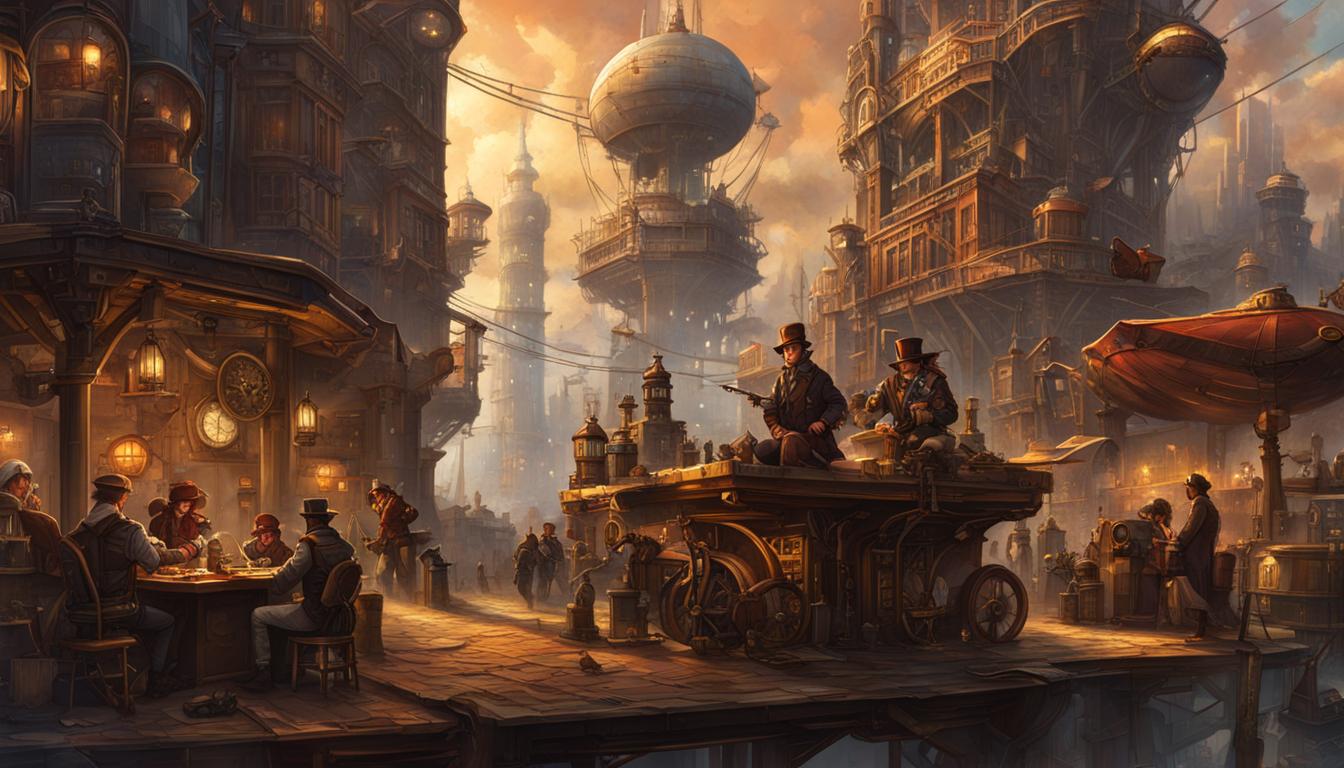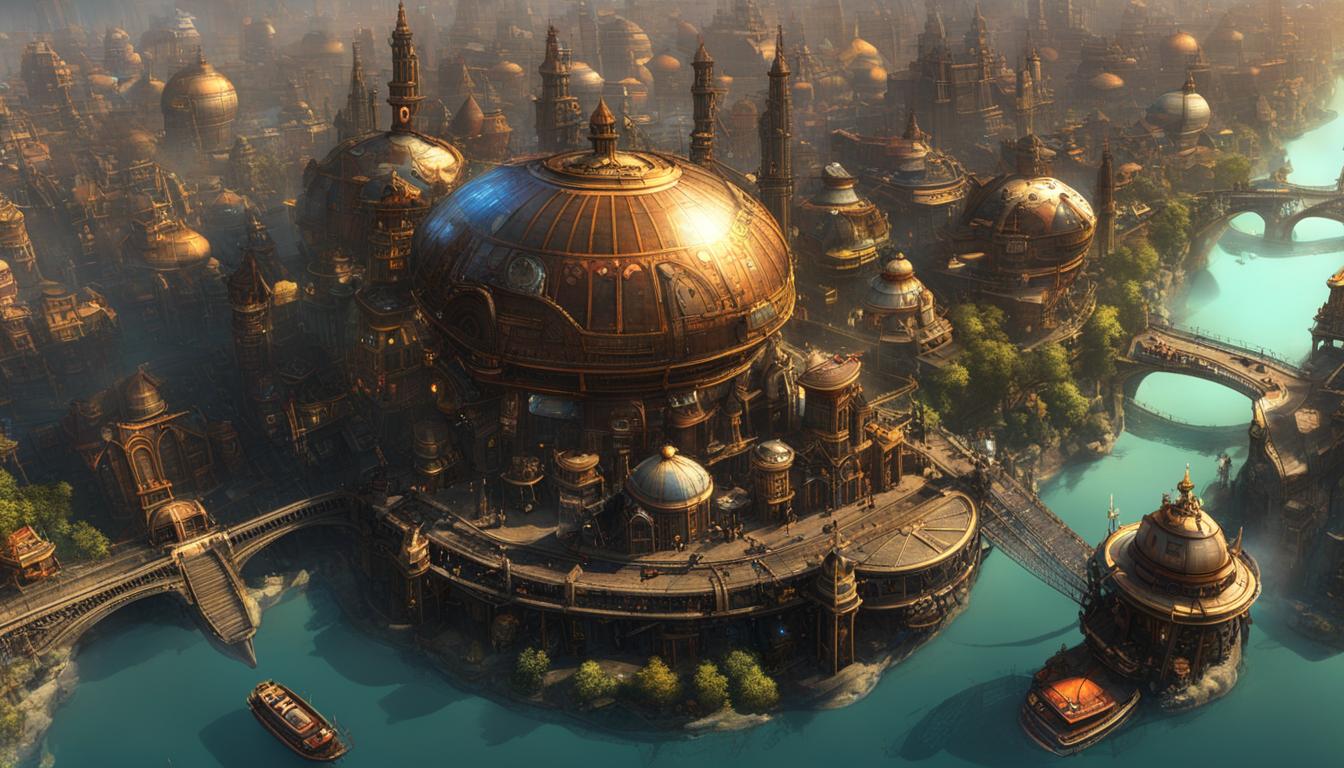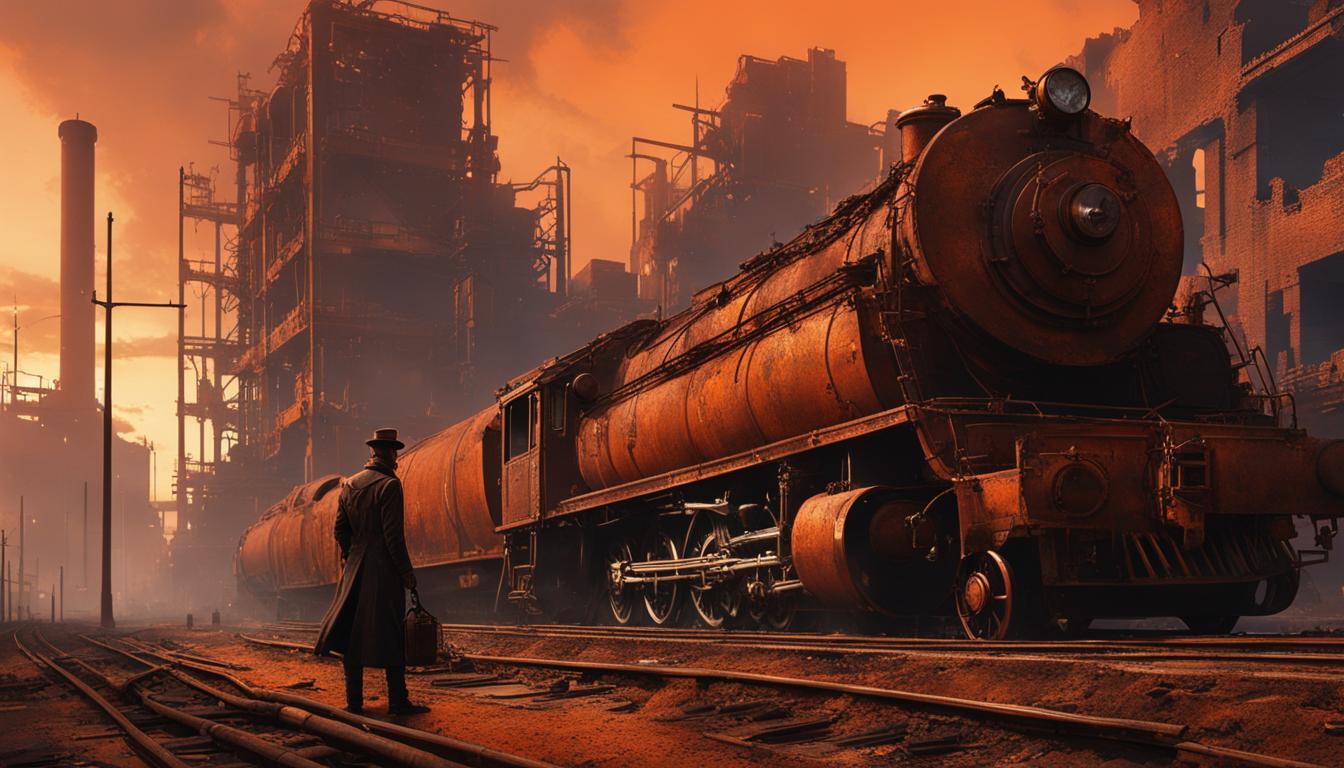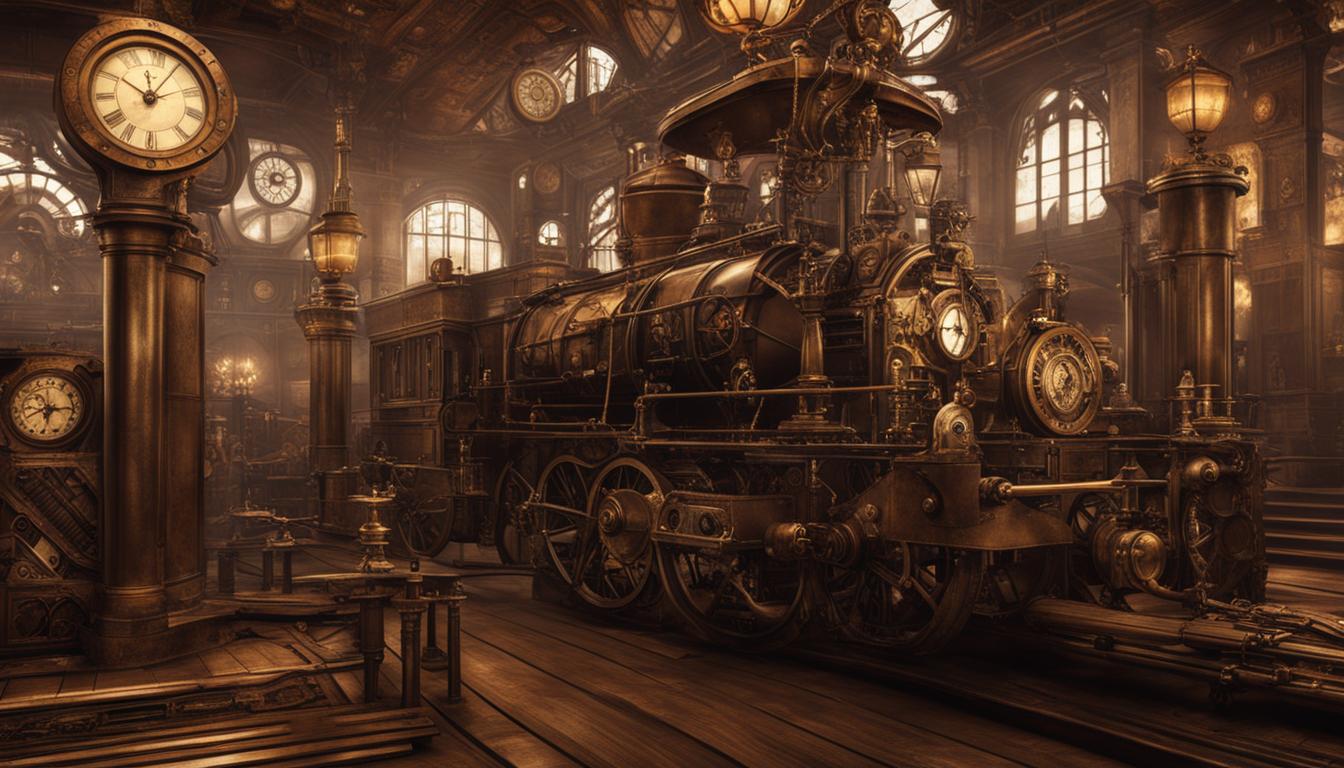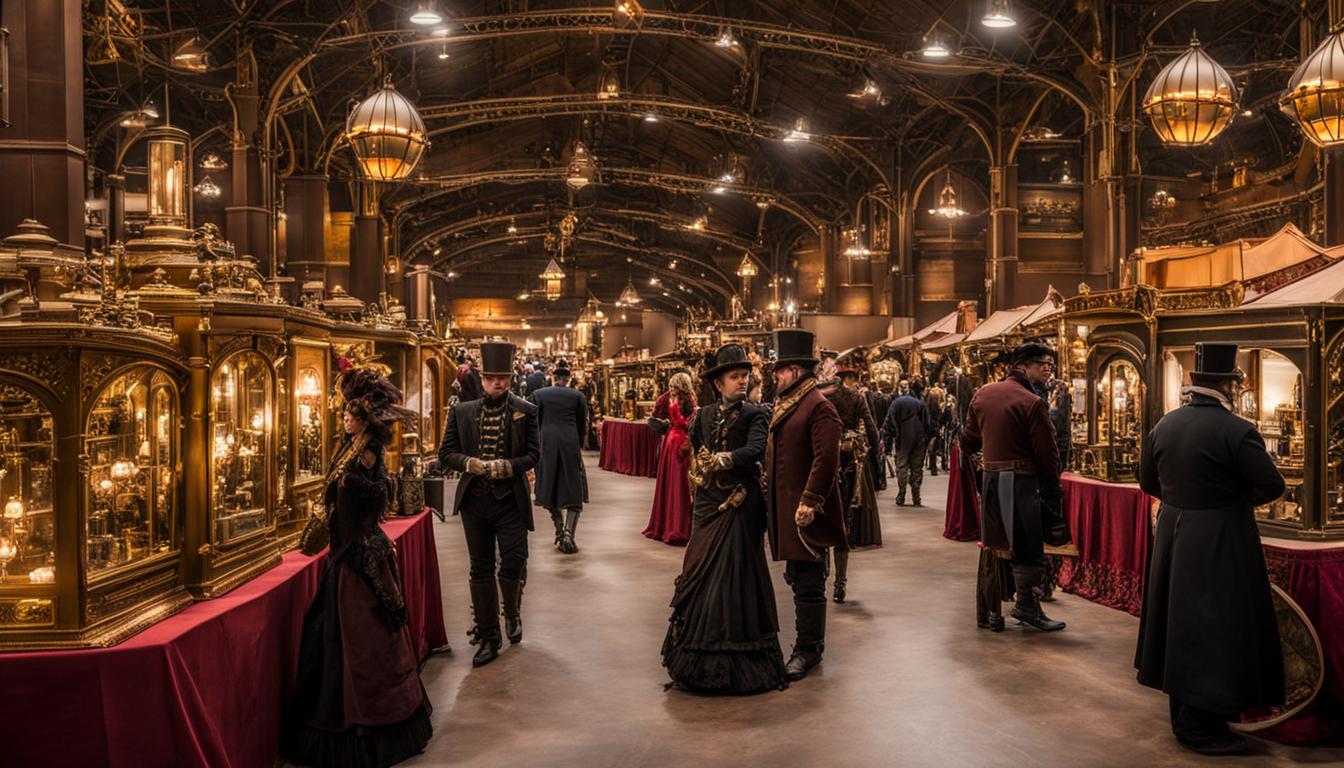Steampunk literature, with its blend of Victorian aesthetics and futuristic technology, has been captivating readers for years. But in recent times, the genre has witnessed a surge in creativity and innovation, pushing the boundaries of traditional storytelling. From groundbreaking books to innovative narratives, the world of steampunk has undergone a thrilling evolution.
The Quantum-Steampunk Short-Story Contest has played a significant role in this transformative journey. With over 160 entries from around the globe, the contest showcased the ingenuity of writers who dared to reimagine the possibilities of steampunk storytelling. From professional authors to physics professors and even young talents, the competition saw an incredible range of submissions.
The winning story, “The Creature of Ashen House” by David Wakeham, took readers on an unforgettable journey through a world where steam-powered gadgets collided with quantum technologies. This narrative, along with other notable stories like “Doctor Up and Mister Down” by Gerard McCaul and “Eikonal” by Paulo Barreto, demonstrates the power of blending steampunk aesthetics with imaginative twists.
In addition to the official awards, the Quantum-Steampunk Short-Story Contest also recognized exceptional elements within the stories. From badass steampunk heroines to heart-captivating automatons, the contest celebrated the diversity and creativity within the genre.
Key Takeaways:
- Recent steampunk stories have brought fresh perspectives and innovative narratives to the genre.
- The Quantum-Steampunk Short-Story Contest highlighted the creativity of writers worldwide.
- Authors are pushing the boundaries of traditional steampunk storytelling by exploring new themes and incorporating contemporary elements.
- Steampunk literature has experienced a resurgence in recent years, attracting a growing audience of readers.
- The blending of Victorian aesthetics with futuristic technology in steampunk storytelling has had a significant impact on the science fiction genre as a whole.
The Intersection of Quantum Technology and Steampunk
In the world of steampunk storytelling, the Quantum-Steampunk Short-Story Contest has been a catalyst for innovation and creativity. This unique contest challenged writers to explore the intersection of quantum technology and the beloved steampunk style. The contest received an impressive 167 entries from 29 countries, showcasing the global interest in this captivating genre.
Quantum technologies, such as quantum computers, communication networks, and cryptographic systems, provided the inspiration for the imaginative narratives that unfolded during the contest. Participants were tasked with creating stories that took place partially during the 1800s and featured real or imagined quantum technologies. The result? A collection of stories that seamlessly blended the futuristic elements of quantum mechanics with the Victorian aesthetic of steampunk.
As the contest progressed, it became evident that the fusion of quantum technology and steampunk style opened up a whole new world of storytelling possibilities. From time-traveling airships powered by quantum energy to intrepid explorers utilizing quantum-based inventions, the stories showcased the incredible potential of combining these two distinct worlds. The Quantum-Steampunk Short-Story Contest has truly pushed the boundaries of steampunk storytelling, offering a glimpse into a future where cutting-edge science meets the charm of the past.
Notable Entries from the Quantum-Steampunk Short-Story Contest
| Story Title | Author |
|---|---|
| The Creature of Ashen House | David Wakeham |
| Doctor Up and Mister Down | Gerard McCaul |
| Eikonal | Paulo Barreto |
| Pursuit | Cristina Legarda |
These stories, among many others, captivated readers with their unique blend of quantum technology and steampunk aesthetics. The winners of the Quantum-Steampunk Short-Story Contest showcased the talent and imagination of the participating writers, proving that the future of steampunk storytelling is bright and filled with endless possibilities.
The Resurgence of Steampunk Literature
Steampunk literature has experienced a resurgence in recent years, captivating readers with its unique blend of historical settings, advanced technology, and imaginative storytelling. Modern steampunk stories go beyond the typical tropes and themes of the genre, incorporating elements of mystery, adventure, and romance while also addressing social and political issues. Authors are pushing the boundaries of steampunk storytelling, introducing fresh storylines and innovative narrative techniques that keep readers enthralled.
“Steampunk allows us to explore the past through a fantastical lens, offering a unique perspective on history and society,” says acclaimed steampunk author, Victoria Quinn. “By blending the aesthetics of the Victorian era with futuristic concepts, we can delve into complex themes and challenge conventional narratives.”
Emerging steampunk story themes reflect our evolving society, with authors exploring diverse historical periods beyond the traditional Victorian era. From the Wild West to ancient civilizations, these stories transport readers to alternate worlds and timelines, offering a fresh take on the genre. Steampunk literature is also embracing social commentary, addressing issues such as inequality, environmental degradation, and the impact of technology on society.
With an increasing demand for modern steampunk literature, authors are constantly pushing the boundaries of the genre to offer readers captivating stories. By introducing new themes, incorporating contemporary elements, and experimenting with narrative techniques, steampunk storytelling continues to evolve, attracting a growing audience of fans eager for innovative tales set in mesmerizing worlds.
Table: Emerging Steampunk Story Themes
| Themes | Description |
|---|---|
| Steampunk Noir | Combining the gritty world of detective noir with steampunk aesthetics, these stories often feature hard-boiled protagonists navigating the dark underbelly of steam-powered cities. |
| Alternative History | Exploring what the world would be like if certain historical events took a different path, these stories reimagine historical figures, wars, and cultural movements. |
| Post-Apocalyptic Steampunk | Set in a world devastated by environmental or technological disasters, these stories showcase the resilience of characters navigating a society fueled by steam and ingenuity. |
| Steampunk Fantasy | Merging the fantasy genre with steampunk elements, these stories often feature magic, mythical creatures, and epic quests set in intricate steampunk worlds. |
| Steampunk Romance | Bringing together the excitement of steampunk adventure with passionate love stories, these novels explore the complexities of relationships against a backdrop of steam-powered wonders. |
As steampunk literature continues to evolve, readers can expect even more diverse and imaginative stories that push the boundaries of the genre. The resurgence of steampunk has breathed new life into the literary landscape, offering readers a captivating blend of history, technology, and storytelling.
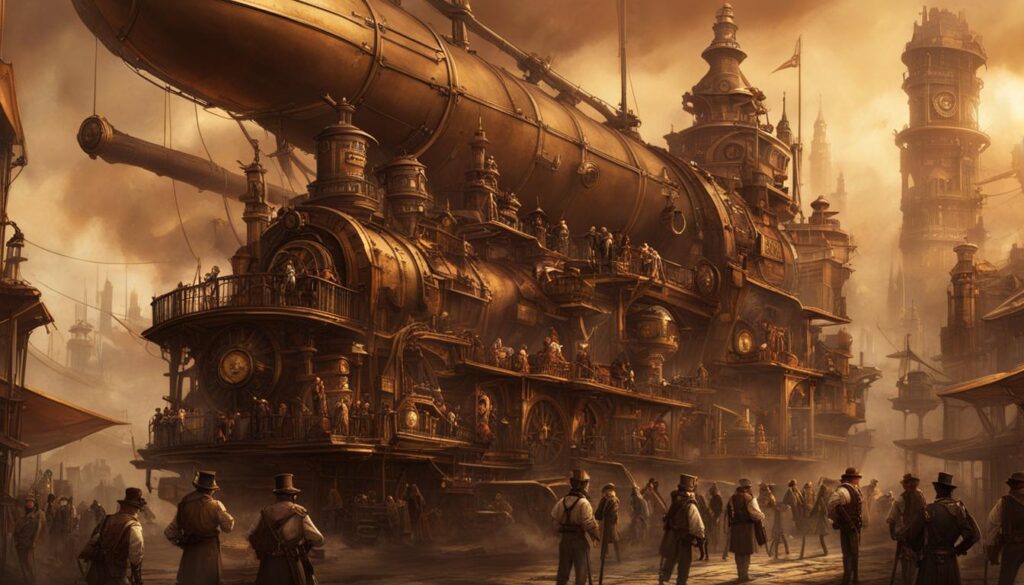
The Allure of Steampunk World-Building
Steampunk storytelling captivates readers with its rich and immersive world-building. These narratives transport readers to alternative versions of the past, where steam-powered technology reigns supreme. The intricate attention to detail in crafting these settings adds depth and authenticity to the stories, drawing readers into the imaginative worlds of steampunk.
Steampunk settings often blend historical details with fantastical elements, resulting in visually stunning and captivating worlds. From towering steam-powered cities to skyships sailing through the clouds, these settings showcase the creativity and ingenuity of the authors. The combination of Victorian aesthetics and futuristic technology creates a unique atmosphere that appeals to readers looking for something different.
Through the careful construction of these worlds, authors establish a sense of time and place that enhances the narratives. Steampunk narratives thrive on the exploration of intricate societies and the interactions between characters and their environments. The settings themselves become characters, influencing the story’s trajectory and providing a backdrop for the characters’ actions and conflicts.
Overall, the allure of steampunk world-building lies in its ability to transport readers to a bygone era where the possibilities are limitless. With its blend of history, technology, and imagination, steampunk offers a visual and sensory feast that keeps readers coming back for more.
Influential Authors in the Steampunk Genre
Steampunk literature has been shaped by numerous innovative authors who have pushed the boundaries of the genre and introduced evolving narrative techniques. These influential writers have captivated readers with their imaginative worlds and compelling storytelling. Let’s explore some of the key figures in the steampunk genre.
Mark Hodder
Mark Hodder is a highly regarded author known for his authentic portrayal of steampunk settings and characters. His novels, including “The Strange Affair of Spring Heeled Jack” and “The Curious Case of the Clockwork Man,” seamlessly blend literary and technological figures of the Victorian era. Hodder’s ability to create a unique reading experience by intertwining historical events with fantastical elements has earned him critical acclaim in the steampunk community.
Cherie Priest
Cherie Priest is another influential author who has made a significant impact on the steampunk genre. Her novel “Boneshaker” is a prime example of her innovative narrative style and world-building. Priest has a talent for blending steampunk with other genres, such as horror and mystery, creating thrilling and engaging stories that captivate readers. Her contributions to the genre have helped shape the modern landscape of steampunk literature.
Gail Carriger
Gail Carriger is recognized for her unique and witty approach to steampunk storytelling. Her “Parasol Protectorate” series, starting with “Soulless,” introduces readers to a Victorian England where supernatural creatures and sophisticated steampunk technology coexist. Carriger’s clever dialogue and strong female characters have garnered her a dedicated following. Her influence on steampunk literature extends beyond her storytelling skills; she has also inspired a new wave of steampunk fashion and aesthetics.
| Author | Notable Works |
|---|---|
| Mark Hodder | “The Strange Affair of Spring Heeled Jack,” “The Curious Case of the Clockwork Man” |
| Cherie Priest | “Boneshaker,” “Dreadnought” |
| Gail Carriger | “Soulless,” “Changeless” |
These authors, among others, have played a significant role in shaping the steampunk genre and its evolving narrative techniques. Their innovative storytelling and imaginative worlds continue to captivate readers and inspire new generations of writers. As steampunk literature progresses, we can anticipate even more groundbreaking narratives from these talented authors and the wider steampunk community.
Steampunk’s Impact on Science Fiction
The world of steampunk has not only made a mark in literature but has also had a profound impact on the science fiction genre as a whole. With its unique blend of historical settings, advanced technology, and imaginative storytelling, steampunk has inspired authors to explore new storylines and experiment with writing styles. The genre’s influence can be seen across various forms of media, including movies, video games, and comics, where the blending of historical elements with futuristic concepts has captivated audiences worldwide.
Contemporary steampunk storylines often delve into alternate histories and speculative futures, providing an exciting blend of past and present. The fusion of Victorian aesthetics with advanced technology has opened up new possibilities for storytelling, creating a visually striking and thought-provoking narrative experience. From airships sailing through the skies to intricate clockwork mechanisms, steampunk offers a rich tapestry of imagery that continues to fascinate and enthrall readers and viewers alike.
“Steampunk is a genre that allows us to reimagine history and explore the ‘what-ifs’ of technology,” says acclaimed steampunk author, Gail Carriger. “It’s an opportunity for us to ask ourselves, ‘What if the Victorians had access to advanced machinery and inventions?’ The possibilities are endless.”
As the genre continues to evolve, new steampunk writing styles are emerging, pushing the boundaries of traditional storytelling. Authors are incorporating diverse historical periods, social commentary, and hybridizing steampunk with other genres such as fantasy or romance. This blend of elements keeps the genre fresh and engaging, captivating a wide range of readers and ensuring that steampunk remains a relevant and vibrant part of science fiction for years to come.
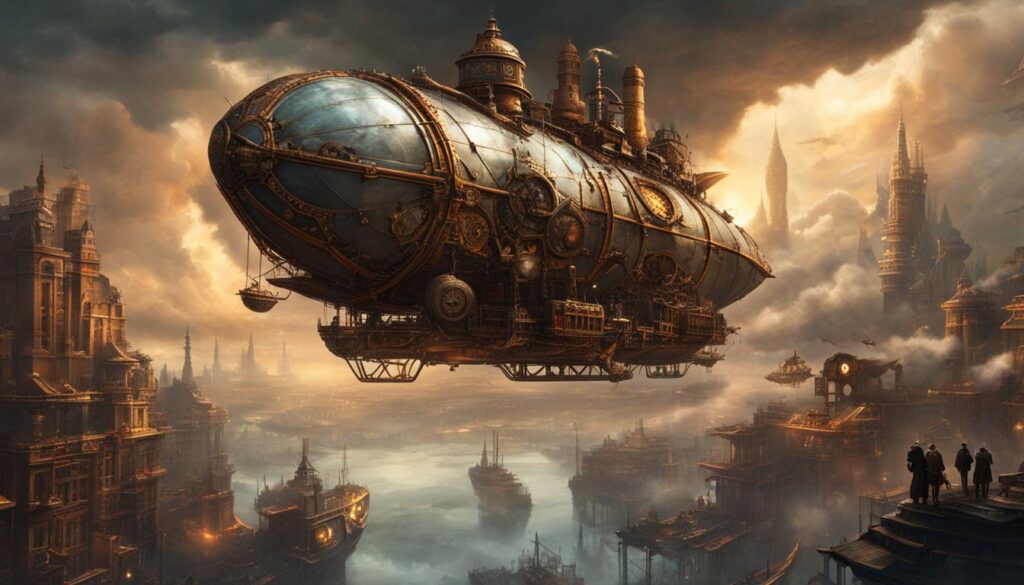
Table: Examples of Steampunk Influences in Other Media
| Media | Steampunk Influence |
|---|---|
| Movies | The “Sherlock Holmes” film series directed by Guy Ritchie combines Victorian aesthetics with action-packed steampunk elements, showcasing advanced gadgets and machinery. |
| Video Games | The “Bioshock” series, set in an underwater dystopia, blends retro-futuristic steampunk elements with a unique art deco style, creating a visually stunning and immersive gaming experience. |
| Comics | The “Lady Mechanika” series by Joe Benitez features a steampunk-inspired heroine and a world filled with clockwork technology, mystery, and adventure. |
The Future of Steampunk Storytelling
As steampunk literature continues to evolve, it embraces the latest trends and explores new territories of storytelling. From incorporating diverse historical periods to blending steampunk with fantasy or romance, authors are pushing the boundaries of the genre, keeping it fresh and exciting.
One of the modern steampunk literature trends is the exploration of social commentary within the narratives. By addressing social and political issues, steampunk stories become more than just fantastical adventures; they become thought-provoking and relevant reflections of our own society.
Furthermore, the fusion of steampunk with other genres, such as fantasy or romance, adds new dimensions to the storytelling. By combining different storytelling traditions, authors create narratives that captivate readers with their intricate plots and compelling characters.
Incorporating contemporary elements
Another emerging trend in steampunk storytelling is the incorporation of contemporary elements into the narratives. As technology advances in the real world, authors are finding ways to blend present-day concepts with the Victorian aesthetic of steampunk. This fusion of past and present creates a unique reading experience, allowing readers to explore familiar themes through a different lens.
With these latest trends, the future of steampunk storytelling looks promising. Authors are continuously finding new ways to innovate and captivate readers, ensuring that the genre remains relevant and engaging. As readers, we can eagerly anticipate the next wave of groundbreaking narratives that will take us on thrilling adventures through the world of steampunk.
Table: Emerging Trends in Steampunk Storytelling
| Trend | Description |
|---|---|
| Exploring diverse historical periods | Authors are delving into different eras and cultures, adding depth and diversity to steampunk narratives. |
| Incorporating social commentary | Steampunk stories are addressing social and political issues, offering insightful reflections on contemporary society. |
| Blending with other genres | Authors are merging steampunk with fantasy, romance, and other genres, creating unique and captivating narratives. |
| Incorporating contemporary elements | Modern concepts and technologies are seamlessly integrated into steampunk settings, providing a fresh perspective. |
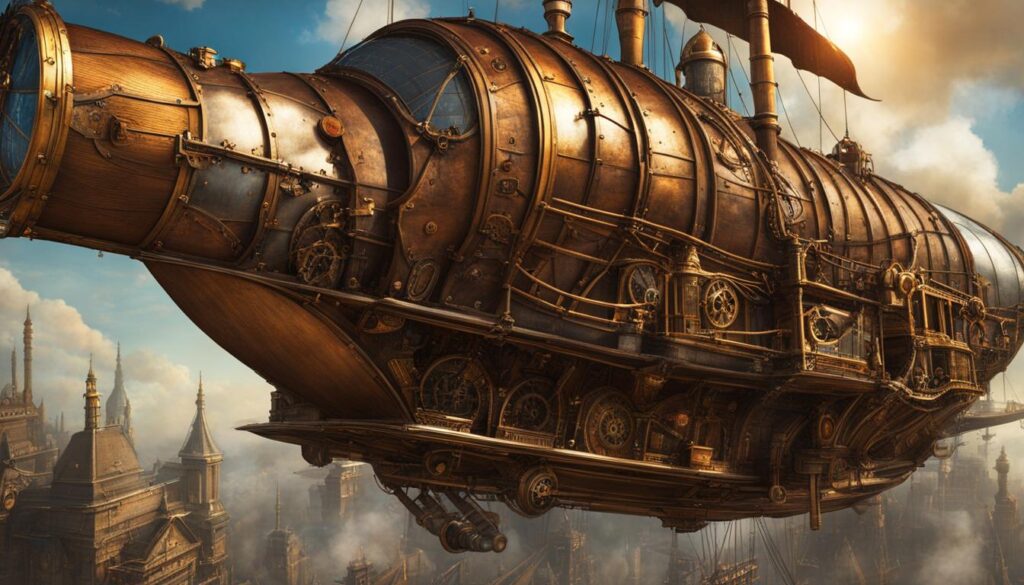
Conclusion
Recent breakthroughs in steampunk storytelling have breathed new life into the genre, captivating readers with contemporary steampunk storylines and innovative narratives. The Quantum-Steampunk Short-Story Contest showcased the limitless creativity of writers worldwide, pushing the boundaries of steampunk storytelling to new heights. By incorporating quantum technology and exploring fresh themes, these talented authors have redefined what it means to be a steampunk storyteller in the modern age.
With influential authors leading the way, the genre continues to evolve and enthrall readers with its unique blend of historical settings, advanced technology, and imaginative storytelling. These innovative steampunk narratives transport us to captivating worlds that are both familiar and fantastical, capturing our imaginations with their intricate details.
As we look to the future of steampunk storytelling, we can anticipate even more groundbreaking narratives that push the boundaries of the genre. Contemporary steampunk storylines will continue to explore diverse historical periods, incorporate social commentary, and blend with other genres, such as fantasy or romance. With the ongoing advancement of technology, authors might even incorporate contemporary elements into their steampunk narratives, blurring the line between past and present.
Steampunk literature remains a vibrant and ever-evolving genre, offering readers a delightful escape into worlds that are both familiar and extraordinary. Through its continuous innovation and creative exploration, steampunk storytelling promises to captivate readers for years to come with its contemporary steampunk storylines and innovative narratives.
FAQ
How many entries were received for the Quantum-Steampunk Short-Story Contest?
The contest received 167 entries from 29 countries.
Who won the Quantum-Steampunk Short-Story Contest?
The winning story, “The Creature of Ashen House,” was written by David Wakeham and received the $1,500 grand prize.
Were there any notable stories besides the winning entry?
Yes, other notable stories included “Doctor Up and Mister Down” by Gerard McCaul and “Eikonal” by Paulo Barreto.
Who won the People’s Choice Award?
The People’s Choice Award went to Cristina Legarda for her story “Pursuit.”
What were some exceptional elements recognized in the contest?
The contest also recognized stories with exceptional elements like badass steampunk heroines and heart-capturing automatons.
What were the requirements for the Quantum-Steampunk Short-Story Contest?
Stories had to take place at least partially during the 1800s and feature real or imagined quantum technologies, such as quantum computers, communication networks, and cryptographic systems.
How has steampunk literature evolved in recent years?
Steampunk literature has experienced a resurgence, with authors exploring new themes and writing styles within the genre.
What are some emerging trends in the steampunk genre?
Emerging trends in the genre include exploring diverse historical periods, incorporating social commentary, and blending steampunk with other genres such as fantasy or romance.
What is one of the most compelling aspects of steampunk storytelling?
One of the most compelling aspects is the rich and immersive world-building, where authors create intricate narratives set in alternative versions of the past.
Who are some influential authors in the steampunk genre?
Mark Hodder, Cherie Priest, and Gail Carriger are some influential authors known for their innovative steampunk narratives and imaginative worlds.
How has steampunk storytelling impacted the science fiction genre?
Steampunk storytelling has had a significant impact on the science fiction genre as a whole, inspiring authors to explore new storylines and writing styles.
What does the future hold for steampunk storytelling?
The future holds endless possibilities for innovation and creative exploration in steampunk storytelling, with authors blending past and present elements and pushing the boundaries of the genre.

